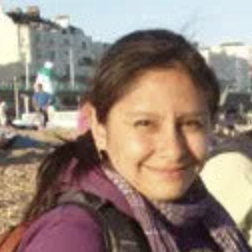
While the concept behind REDD+ remains hugely attractive, it faces huge challenges when it comes to design and implementation. Vilseskogen
BRASILIA, Brazil (28 March, 2013) _ Initiatives aimed at reducing greenhouse gas emissions from forest loss (REDD+) need to be financially transparent and accountable, an Interpol expert said. By closely involving forest-dwelling communities, we also minimize the risks of money being diverted into the wrong hands or distributed inequitably.
Davyth Stewart, speaking at a session organized by the Center for International Forestry Research (CIFOR) at the 15th International Anti-Corruption Conference in Brasilia late last year, also recommended independent auditing of projects linked to the U.N.-backed scheme; assurances that information is up-to-date and publicly available; participation by stakeholders in the ways funds are managed; and clear consequences when they are misused.
REDD+ was introduced to the U.N. Framework Convention on Climate Change in 2005 as a way to pay developing countries to reduce deforestation and forest degradation, which pumps more greenhouse gases into the atmosphere globally than airplanes, trucks, ferries and cars combined. The idea is to get rich countries to pay heavily forested developing nations to keep their trees standing.
CIFOR says that while the concept behind REDD+ remains hugely attractive, it faces huge challenges when it comes to design and implementation.
Some graft-ridden countries (like Kenya, Indonesia, and Malaysia, ranking 139, 118 and 54 on the Corruption Perceptions Index respectively) have taken steps to implement broad institutional and governance reforms, but powerful interests continue to try to push their business-as-usual approaches to forest use.
Unclear or contested forest-ownership rights, difficulties coordinating between various government agencies, and lack of reliable monitoring or credible processes for establishing reference levels add to the problems, CIFOR said in a book titled Realising REDD+: National strategy and policy actions.
Added to all this, the international REDD+ architecture itself is far from clear and will continue to evolve over the next few years.
“Yes, there is reason for concern,” said Andrew Wardell, CIFOR’s Research Director for Forests and Governance, who has spent more than three decades working on natural resource management issues in developing countries. “But with strong monitoring, reporting and verification systems — both for carbon and financial flows — it should be possible to reduce the threat of corruption.”
Several different financial models are now being considered. In simplest terms, they include a market-based approach (which uses the carbon market to finance forest protection) and the use of public funds (controlled either by multilateral organizations, such as the World Bank and the U.N. REDD Programme, or participating countries).
Stewart, who works with the international police force’s Environmental Crime Programme, says looking at the strengths and weaknesses of each of these models will continue to be key.
The pros and cons of the market-based approach . . .
The market-based approach seeks to limit pollution by issuing credits to power plants, companies, individuals and governments or each ton of carbon they emit. These credits can then be traded in carbon markets. While the current focus is on renewable energy projects, it is hoped that eventually forestry will be an important component of a future global compliance mechanism.
One of the risks here is that money _ especially when it reaches the local level _ becomes “fragmented,” said Stewart.
This is because there might be multiple sellers, or intermediaries, at times making decisions based on their personal or political ties.
“The increased number of transactions that happen, make the fund distribution far more diverse and dispersed, and therefore more difficult to monitor,” said Stewart, who is currently leading a joint project that not only combats forestry-related crimes, but looks at ways in which these undermine REDD initiatives being introduced at national and local levels of government.
. . . and then there’s the public fund-based model
The multilateral-bilateral model, Stewart said, consolidates financing in one place, making it easier to monitor, account for and audit the funds.
It also has the advantage that it can direct the money where it is most needed, whether for national, regional or local projects.
One of the downsides, however, is that without standardized frameworks and procedures, it can be difficult to effectively compare costs and the results of different projects.
None of these problems, however, are insurmountable, Stewart said, as long as there is a high degree of transparency and a commitment to give communities working with REDD projects a say in what’s going on.
“First we need to have minimum standards for the funds,” he said, pointing to the frameworks themselves and procedures for costs and overheads.
In this way, it would be easier to compare funds for different projects and their usage. It would allow, too, for closer collaboration between agencies as they try to implement them.
Stewart also calls for enabling participation of stakeholders, including local communities.
“They need to have access to capacity-building opportunities and support,” Stewart added.
Aled Williams, form the U4/Anti-Corruption Resource Centre agreed.
“We also need to think in ways in which citizens not only NGOs, are affected by REDD,” he said. “To what extent do they have strong and accountable institutions that ensure they are involved in the decision making processes?
This work forms part of the CGIAR Research Program on Forests, Trees and Agroforestry.
We want you to share Forests News content, which is licensed under Creative Commons Attribution-NonCommercial-ShareAlike 4.0 International (CC BY-NC-SA 4.0). This means you are free to redistribute our material for non-commercial purposes. All we ask is that you give Forests News appropriate credit and link to the original Forests News content, indicate if changes were made, and distribute your contributions under the same Creative Commons license. You must notify Forests News if you repost, reprint or reuse our materials by contacting forestsnews@cifor-icraf.org.











